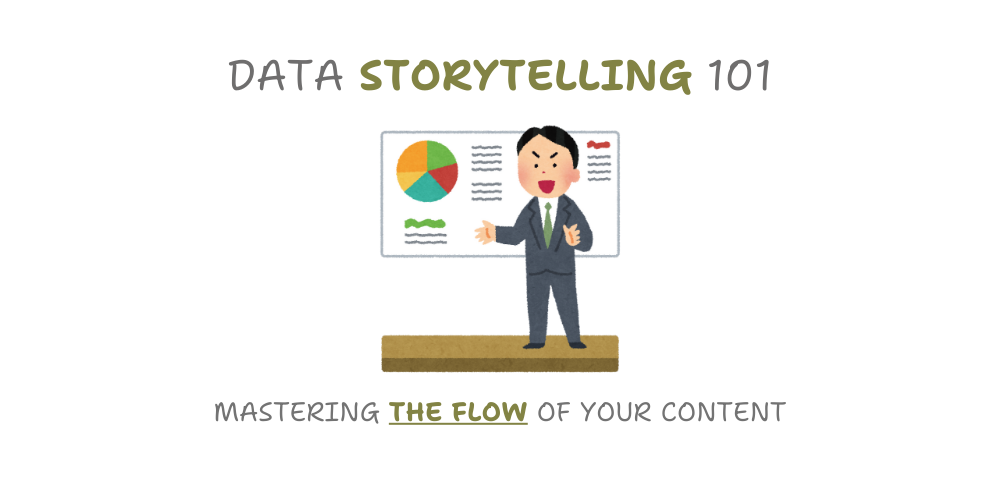Please note this is early documentation, so the explanations, instructions, or formatting might not be fully refined. If you encounter any difficulties, feel free to contact me for guidance.

In this article, I’ll guide you through my framework for data storytelling, putting them into action.
Original article:

This data storytelling framework is crafted from my knowledge of organizing dashboard layouts in data visualization for clarity and delivering engaging presentations to readers.
The image above illustrates two concepts for crafting your dashboard or report: the Pyramid Principle and the Onion Model. These concepts serve as guidance for structuring an optimal layout that facilitates easy comprehension of the presented information by the reader.
Data Granularity
In various contexts, “granularity” refers to the level of detail or precision in something. When discussing data, “granularity” refers to the level of detail of the data.
- Low granularity. For example, if you’re looking at sales data on a monthly basis rather than daily, the granularity is lower because you’re aggregating the data over a longer time period.
- High granularity
means that
the data is aggregated or summarized at a higher level
, providing a broader overview or less detailed information
means that
the data is more detailed, providing more specific or finer-grained information.
Using the sales data example, if you’re looking at sales data on a daily basis rather than monthly, the granularity is higher because you’re getting more detailed information about sales activities.
So, low granularity implies a broader or less detailed view, while high granularity implies a more detailed or specific view.
Dashboards vs. Reports: What’s the Difference?
Dashboards and reports, though commonly confused, serve different purposes in data visualization. Dashboards, like a car’s speedometer, offer a quick, real-time view of key metrics. Reports, on the other hand, function like a detailed trip log, providing in-depth analysis with historical data for broader trend identification. In short, dashboards give a high-level current view, while reports offer a more comprehensive historical analysis.
Data Storytelling Workout 1
The subject concerns the World Economic Indicator, determined by a nation’s GDP.
Step 1: Addressing the Big Question
This is a critical step in determining our analytical perspective. We’ll be focusing on how Indonesia’s GDP compares to other countries. This comparison will be the core element visualized in our analysis.
Step 2: Structuring the Content Flow with the Onion Model
In this context, our aim is to compare Indonesia’s GDP with the top two GDPs in its regional context. To provide clarity, Indonesia falls under Southeast Asia (SEA), a subset of the broader Asia (AS) region. With this in perspective, the Onion Model will be employed to enhance the conceptualization of the layout flow.

Think of the model like a magnifying glass. The smaller circle zooms in for a closer look at a specific part of the data. This close-up view shows more details (higher granularity) which is represented by a more concentrated color. In contrast, the larger circle represents a broader view of the data with less detail (lower granularity), shown by a less intense color.
Step 3: Structuring Details with the Pyramid Principle
The pyramid principle can be a helpful tool to expand on specific sections within your report or dashboard, providing a clear structure for additional details.
Originally, this principle helps structure your ideas and writing for clarity and conciseness. It works like a pyramid, with the key takeaway at the top, and supporting details forming the layers beneath. However, I’ve adapted the concept slightly in the context of data visualization. Here, the narrow pyramid base represents data with low detail (granularity), while the wider top signifies data with high detail.

The Application of Pyramid Principle
For a deeper dive into pyramid principle, you can refer to these articles:
Step 4: Creating the Report
This final report reflects the application of the established framework.

Indonesia’s Economic Performance Compared to Top GDP Countries
Conclusion
By leveraging the Onion Model and Pyramid Principle, you can craft data narratives that resonate with your audience. These methodologies can be employed during brainstorming to strategically organize content, resulting in well-designed dashboards and reports.
Should you have any inquiries, specific requests, or feedback, please feel free to contact me through LinkedIn or email.
The .pbix files for free-access content are on my GitHub repository.
/w=3840,quality=90,fit=scale-down)
